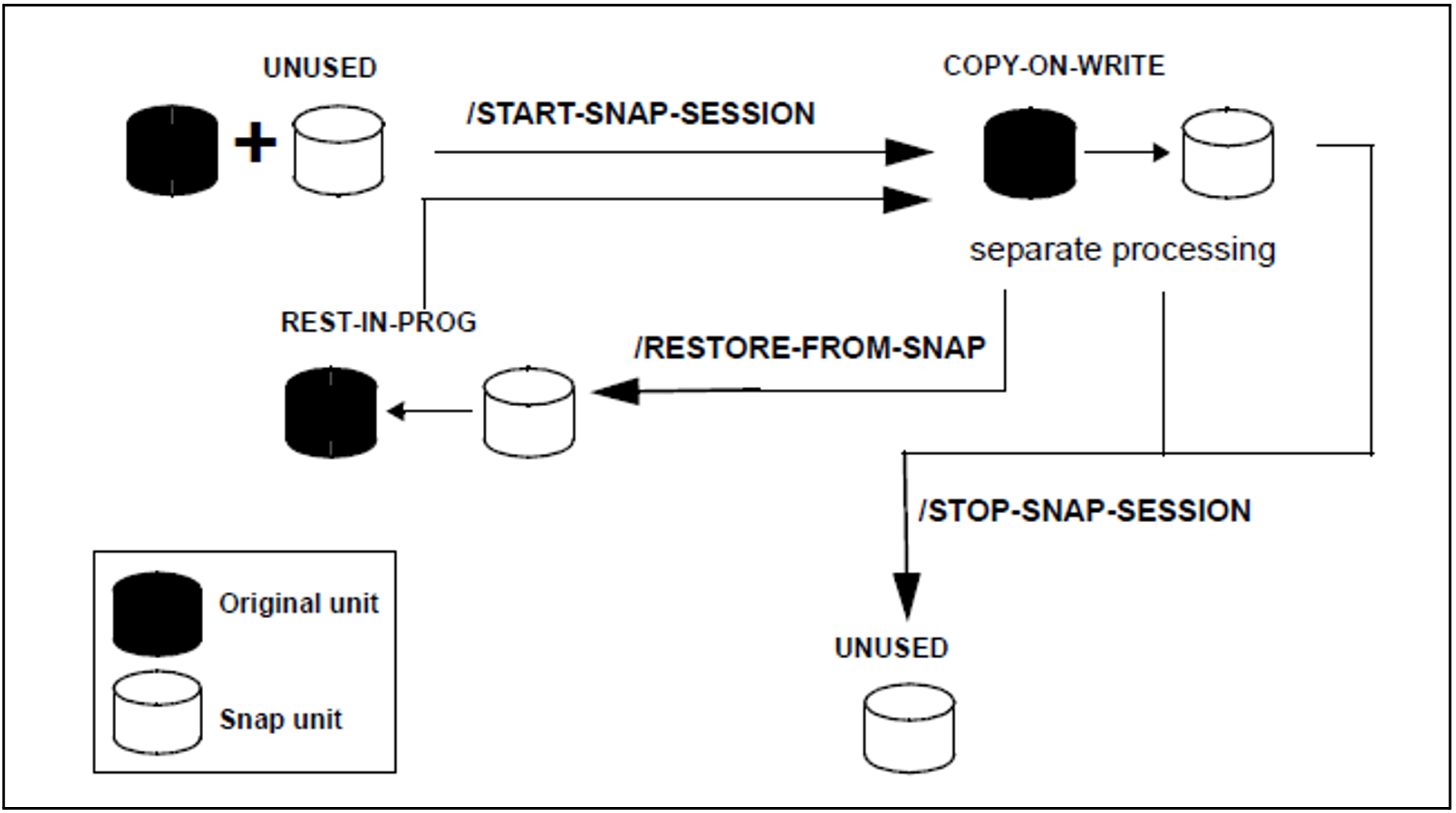This section describes the TimeFinder SnapVX function. TimeFinder SnapVX offers a new strategy for local replication on VMAX3. On VMAX3 it replaces the previous function TimeFinder/Snap and also offers extensive functionality which goes beyond this. A detailed description is provided in the EMC documentation.
SHC-OSD currently implements TimeFinder SnapVX compatibly in the previous functional scope of TimeFinder/Snap with the previous interfaces.
Overview
TimeFinder SnapVX creates a “snapshot” of a logical unit (or of one (possibly of multiple) logical unit(s). The snapshot is a logical copy of the original unit at a particular time (“Point-in-Time copy”): while the data on the original unit is modified, the snapshot retains the status of the data at the time the snapshot was created.
The snapshot is available immediately after creation (and implicit activation) of the snap pair, i.e. there is no copy operation. Creation of the snapshot consequently offers extremely high performance.
The snapshots can be (dynamically) assigned snap units retroactively in order to enable a server to access the snapshot's data. Multiple snap units can be assigned simultaneously to a snapshot.
The original and snap units together form the snap pair. TimeFinder SnapVX manages it in what is known as a snap session. Up to 256 snapshots can currently exist for one original unit.
In commands the UNIT= operand always specifies the original unit. The SNAP-UNIT= operand specifies the snap unit of a snap pair.
TimeFinder SnapVX works using the “Copy-On-First-Write strategy”: only when data on the original unit is changed is the original data concerned written into a central storage area beforehand. As a result, TimeFinder SnapVX only requires little volume capacity. Nevertheless, from the user viewpoint a complete copy of the original data at the time the snapshot was created is always available. This copy is split from the original, thus permitting the original and the copy to be processed separately, for example by different applications.
After separate processing of the original unit and snap unit has been completed, the snap units' data can either be discarded immediately or initially restored to the original units and then discarded.
Multiple snap sessions of an original unit are independent of each other. They can be terminated individually and in any order.
TimeFinder/ SnapVX can also be used in conjunction with SRDF for SRDF source units or SRDF target units. TimeFinder SnapVX cannot be used in conjunction with TimeFinder/Clone.
SHC-OSD offers the option of consistent generation of a pubset’s snap units during ongoing operation. Stopping all inputs/outputs on all the original units concerned while splitting is in progress ensures data consistency.
Figure 18: TimeFinder SnapVX
Application and use
The snap units which are provided with TimeFinder SnapVX and are immediately available supply copies of the productive application data. Data backups, batch evaluations and program tests can consequently be executed on the copies of the “live data”. The original data is available in parallel to the main application, and as a result the latter can remain productive longer.
TimeFinder SnapVX can also be used to speed up accesses when, for example, copies are provided for the accesses of multiple applications instead of the original data.
TimeFinder SnapVX is particularly useful when (for example in the course of a day) multiple backups or copies of productive data are to be created which require a low level of updating. See figure 17 in "TimeFinder/Snap (Symmetrix)".
The copies generated using TimeFinder SnapVX can be used for data backup and for creating replicas of databases.
BS2000 offers an integrated solution for creating snap copies of pubsets. This function is used for data backup and is offered under the name Snapsets. For details, see the “Introduction to System Administration” manual [5].

